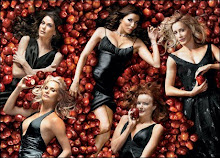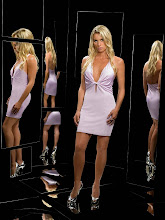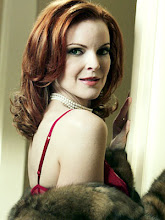“I have been surrounded by mirrors of hard, distorting glass. When they approach me they see only my surroundings, themselves, or figments of their imagination - indeed, everything and anything except me”.
[1]Critical Investigation: An investigation into the negative representations of black people in the advertising media. What are the contexts that seem to reinforce these stereotypes?
This essay will look into the investigation into the negative representations of black people in the advertising media. It can be argued that black people are not shown that often when participating in the advertising media. This essay therefore will be an investigation into the invisibility of black people in the advertising media and the under-representation of them in the advertising media.“To advertise originally meant ‘to draw attention to something’ or to notify or inform someone or something” (Dyer 1982).
[2] Advertising was first broadcasted as a television advert on July 1, 1941. As a result the advertising media has been very successful till this day. However there have been many complaints when the advertising media has been in control, this could be due to ethnicity, gender or age. This essay will go more in depth on the centre of ethnicity area of advertising.
“Black people have largely been portrayed as part of the mainstream middle class”
[3] Would you agree with this? A wide range of media texts show that black people are more commonly linked with part of the working class society rather than ‘mainstream middle class’. An example of this would be that young black teenagers are largely linked with crime adverts such as adverts on SBTV. (Street Broadcaster TV) this allows me to show focus on the black culture in today's society and how they are stereotyped throughout the advertising media.
In addition to this a quote states that: “Advertising promotes unrealistic and dangerous role models".
[4] There are many examples of this. Firstly a cartoon advert of Obama in Russian ice cream ad is being called racist. The advert is and advert trying to promote ice-cream. The advert consists of a cartoon image of president Barack Obama in front of the Whitehouse with a quote saying “the flavour of the week, Black in White!”.. The advert was to promote a new flavour of ice-cream which is ‘chocolate in vanilla’ and used Barack Obama to promote the ice-cream in a racist way. Matthew Creamer states that “This isn’t the first time President Barack Obama’s image has been exploited in international advertising”.
[5] This quote shows that even though Barack Obama is a positive black man in the advertising media the advert is still being very racist towards a positive black man. “These images of people are part of the attraction of the advertisement-and it needs to attract attention rapidly”.
[6] This quote shows that the advertising industry must advertise products or adverts that will be eye-catching to the viewer and that the persuasion of the advert to the audience is at a high standard. Moreover due to the ad being Russian and broadcasted in Russia shows that black people all over the world may be under-represented in the advertising media.
From the beginning of slavery in the seventeenth century, to the present day black people have fought not only for their freedom but to be understood and respected for their unique and cultural contributions. “Microsoft photo shopped a black man out of one of its ads targeting the Polish market”.
[7] This quote states that black people in the advertising media once again are not being shown as positive individuals. The advert consists of a before and after look of how the advert should be which as a result shows the black man in the previous advert to be replaced by a white man. In addition to this, the quote shows that even with The Public Order Act of 1986 black individuals are still getting racially attacked in the advertising media. The Public Order Act is when no one can make it an offence to publish anything which stirs up racial hatred, whether or not it is intended to. To conclude the advert may be accepted however due to it being broadcasted in Poland, where their country would not see it as entirely racist.
Moreover, an American newspaper had published a cartoon image of a cartoon that portrays Ohio State Senator Nina Turner as Aunt Jemima. Stanley Miller, executive director of the Cleveland NAACP civil rights organization quoted that: "It was disturbing to me," he said. Miller said he's not upset about the politics behind the cartoon and accompanying editorial, but by the negative stereotype that dates back decades.
[8] This quote and advertisement shows that this advert being argued against is very upsetting towards Nina Turner. Also the use of the article being from America shows that the use of different countries in the essay shows the diversity of racism in advertising media across the world.Nevertheless "blacks now appear quite often in commercials, although not in the same proportion as in the total population".
[9] This quote shows a more positive view to the invisibility of black people in the advertising media, black people now do participate in the advertising media, however this could be argued against due to them not having as much participation as say the white ethnicity has.
In addition Stuart Hall is a cultural theorist and sociologist. Hall's work covers issues of hegemony and cultural studies.
Furthermore this essay will now compare both an historical and contemporary text within the advertising media. Firstly in the early 60s Golly Robertson’s was founded. Robertson's is a UK brand of
marmalades and
jams. Robertson's introduced the Golly in the early 20th century. Just before the World War 1 was going on in America, John Robertson first saw the Golly doll. Robertson had noticed many young children playing with little black rag dolls and as a result of this the ‘Golly’ became a successful ideal mascot for Robertson’s. Or was it? It was quoted on BBC that “Carol Thatcher liked the jam and she liked the golliwog. When she said that the mixed-race Jo-Wilfried Tsonga resembled a golly, she was making a friendly joke,
[10] As a result of Carol Thatcher saying this: “A BBC executive might argue – though I would disagree – that the word “golliwog” is so offensive that it should never be broadcast”.
[11] T
In addition ‘Golly Dolls’ may have not been seen as racist by some people, however to a majority of people they were. On March 16th 2007, Police seized golly dolls. “TWO golly dolls have been seized by police after complaints that they were offensive”.
[12] This as a result shows that in the early 60s Golly dolls were not seen as a racist but instead jus fun dolls for adults and kids, however today in 2007 they are seen as very offensive, which shows that The Public Order Act is very successful in today’s society.
In contrast however, the contemporary text when looking at the advertising media will be the Cadbury advert which was released in 2009 and featured many black people from the country Ghana participating in the advert. It can be argued that that the TV campaign was humiliating to African people and showed negative racial stereotypes. Nevertheless it can also be positively argued that the ad campaign was culturally sensitive and developed as a happy and inspirational portrayal of Ghanaian culture and something which Ghanaians can feel proud of.
At the start of the advert, two black hands are shown shaking or having a friendly hand shake with each other. This straight away shows to the audience that the advert may have black people participating in it. In addition when the hand shake is over straight after African music is played in the background and then a mask or mascot appears on the screen. This mask may be seen as something from a tribe; however the use of African “facial features” on the mask may cause mayhem for the African audience who are watching it.Moreover as the advert reaches 20seconds the ad shows a more clear understanding of the mise en scene which shows people walking in the country of Ghana. The cocoa beans shown throughout the advert also show that the setting is in Ghana as Ghana is the original place where cocoa beans were founded and made which as a result makes chocolate such as dairy milk. Furthermore the close ups of the African peoples faces may be seen as a negative thing as everything they did with their facial expressions the mascot will do.
“The advert can be seen as perpetuating "colonial stereotypes". This advert as a result has infuriated a number of prominent equality campaigners and Ghanaian leaders in the UK.The Cadbury's TV advert – slogan "show us your cocoa beam" may also be seen as racist as it features a giant, negroid rotating head that unleashes mass dancing among what appear to be highly excitable people in an African village”.
[13]The representations of these people throughout the advert are that they are very happy as they are dancing and singing with big smiles on their faces. This could connote to the audience that the advert can’t be racist as everyone in the advert is happy.
Moreover, as a result of this, socially the advert can be used so people can discuss the advert, whether it being about if the advert is racist or not or if they want to go out and by Cadburys Dairy Milk.Moreover historically this advert may be seen as a very negative advert with many negative outcomes. “In 2007 the ASA banned an ad for Cadbury's Trident chewing gum, which featured a black "dub poet" speaking in rhyme with a strong Caribbean accent, after more than 500 complaints that it was racist”.
[14] This as result shows a negative view towards Cadbury as their representations and stereotypes of black people are very negative.
In addition Engadget famously called out Sony’s multi-vignette PSP campaign in 2006 as being clearly racist. The ads were promoting the new ceramic white PSP. The ads featured an aggressive, strong-looking white woman clawing, clutching and otherwise dominating a subordinate black woman. The campaign was universally panned as racist and Sony yanked the ads, apologizing for its lack of sensitivity.This ad was produced in 2006, I chose to pick an ad in 2006 as due to the slave trades back in the day most of the adverts were racist and was going to stay that way as long as the white upper class people had the upper hand. Nevertheless slave trade has ended a long time ago so there would be no use for racist ads to be shown; this was not the case however in 2006. The world has become a multi-cultural society so when analysing this ad I was fairly surprised that in 2006 the negative stereotypes of black women was portrayed this negative they were connoted as completely useless.Moreover due to this ad being in 2006 and the Cadbury Dairy Milk advert being in 2009 this shows that with the amount of complaints being showed and heard, the message still is not going through as there are still racist adverts being showing in today’s society.
The black woman in this ad is shown as useless and insubordinate. This can relate to the way black women were portrayed back in the 60s and 70s. As they worked for the upper whiter class as slaves and also the use of them selling themselves for the white upper class men shows they were nothing and the ad shows that black women portrayed as “isolated” and “alienated” from today’s society
[1] http://www.okfriends.net/ellison.htm[2] Branston, G. Stafford R. (2002). p.365
[3] O’Sullivan, T. Jewkes Y. (2004) p. 155
[4] Rayner. P. Wall. P. Kruger. S. (2001) p.
[5] http://www.stltoday.com/blogzone/a-conversation-about-race/general-news/2009/03/cartoon-of-obama-in-russian-ice-cream-ad-is-being-called-racist/[6][7] http://industry.bnet.com/advertising/10003668/microsoft-edits-black-person-out-of-ad-everyone-offended/[8] http://www.bvblackspin.com/2009/12/01/black-newspaper-portrays-nina-turner-as-aunt-jemima/?feeddeeplinkNum=0[9] O’Sullivan, T. Jewkes Y. (2004) p. 156
[10] http://www.telegraph.co.uk/comment/columnists/charlesmoore/4520977/Golly-now-we-know-whats-truly-offensive.html[11] http://www.telegraph.co.uk/comment/columnists/charlesmoore/4520977/Golly-now-we-know-whats-truly-offensive.html[12] http://www.manchestereveningnews.co.uk/news/s/1002/1002078_police_seize_golly_dolls.html[13] http://www.guardian.co.uk/media/2009/nov/11/cadbury-dairy-milk-cleared-racism[14] http://www.guardian.co.uk/media/2009/nov/11/cadbury-dairy-milk-cleared-racism








